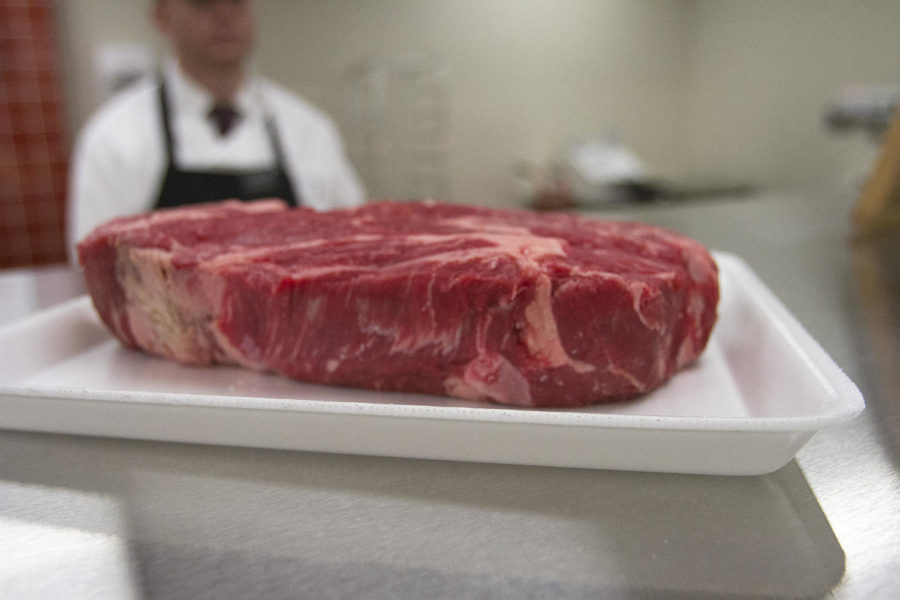Russian meat ban: What it means to U.S. economy
Photo: Blake Lanser/Iowa State Daily
A common feed additive used on U.S. beef and pork caused a ban on the products in Russia. The additive causes increased muscle, which yields more meat. Russia’s ban causes a significant loss for the U.S. market.
February 22, 2013
A Russian ban was recently placed on imported U.S. beef and pork goods due to the use of a common feed additive called ractopamine. Its effect on the United States, as well as Iowa’s agricultural industries, is yet to be known.
Russia placed the ban in early February due to concerns over the United States using ractopamine on livestock.
James McKean, university professor of vet diagnostic, production of animal medicine and animal science, explained that ractopamine is a beta-agonist drug. This means that it mainly affects the muscles around the airways in livestock.
“It has the ability to increase muscle at the expense of fat accumulation,” McKean said. “As swine and cattle mature, they tend to lay down a higher percentage of fat with weight gain. This product increases muscle percentage, rather than fat, over those same levels of maturity. That increases the yield of meat in the carcass, which adds value.”
McKean said this improves feed efficiency and enables producers to achieve desired carcass weights and yields. High feed costs, carcass yield premiums and orderly marketing of groups of animals are the main reasons for the United States’ use of ractopamine.
“Consumers benefit from this efficiency of production with more meat availability and more reasonable prices than would exist without the product use,” McKean said.
McKean said that ractopamine was approved by the U.S. Food and Drug Administration back in 1999 in swine, and later in beef and turkeys.
“There are consumers and governmental agencies who, for whatever reason, do not want to use technologies to increase efficiency or quantities of food products,” McKean said. “There is no universal definition of ‘safe’ or measure that determines when a product is ‘safe.’ In most cases, agreement can be reached when a product causes toxic effects that can be measured and causation determined.”
McKean said a wide range of opinions exist about where the line between “safe” and “not safe” is to be placed.
Lee Schulz, assistant professor of economics, said although Russia has a smaller proportion of the market for U.S. meat sales, the complete loss of the Russian market would be rather significant for the United States.
He pointed out that, for Russia, it’s more of a market-access issue.
“Russia restricting exports would lower competition among exporting countries and raise their prices domestically,” Schulz said. “Countries that do establish ractopamine-free production systems and implement testing programs will have increased costs, which will be passed along as higher prices.”
Schulz speculated that Russia’s action could be done not so much out of a “steadfast concern about the safety of ractopamine or the comfort of Russia’s citizens,” but rather motivated more by protectionism.
In economics, protectionism is defined as “the theory, practice or system of fostering or developing domestic industries by protecting them from foreign competition through duties or quotas imposed on importations.”
In this case, the duty imposed would be the ban on goods with ractopamine.
“One of the damaging aspects of this situation is the potential fallout,” Schulz said. “This unwarranted attention could bring about questions such as: ‘This product is banned in Russia, so should we ban it here?’ This is and will likely continue to be an ongoing trade issue.”







